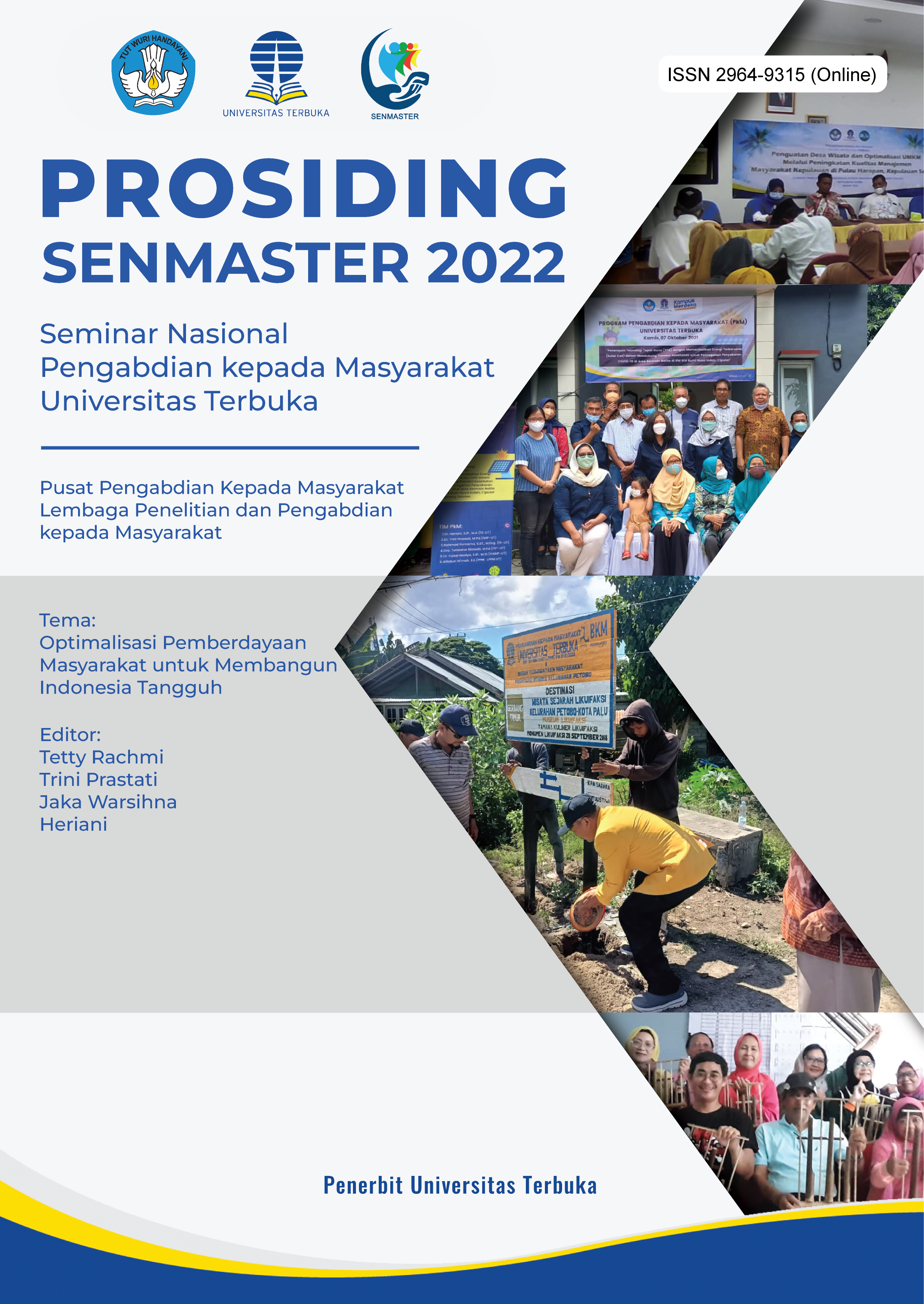PEMANFAATAN LAHAN DAN SUMBER AIR DI KAMPUNG WISATA CIWALUH
DOI:
https://doi.org/10.33830/prosidingsenmaster.v2i1.695Keywords:
tarpaulin ponds, aquaculture, tilapia, catfishAbstract
The success of a fish farming business depends on the quality of the water used. Ciwaluh Village, which is located in Wates Jaya Village, Cigombong District, Bogor Regency has a spring that never dries. With an area of 15 hectares of rice fields and 39 hectares of land, the people of Ciwaluh have succeeded in turning their village into a tourist village. This makes optimism for us to encourage them to use their land and water sources. Fish cultivation which is currently very easy to implement and widely practiced by the wider community is fish cultivation using tarpaulin ponds. The advantages of using a tarpaulin pool include: it is simple, does not have to make holes in the ground, can be arranged in a narrow area, and the cost is more economical. The tarpaulin pond applied in Ciwaluh village uses 2 circular shapes with a diameter of 3 m and 1 square shape measuring 3x3 m2 with a total number of 500 tilapia stocked, and 3000 catfish. The size of stocked tilapia ranged from 9-10 fish/kg, while the size of stocked catfish was 15-16 fish/kg. The cultivation process begins with land preparation, pond preparation, fish seed preparation, making tarpaulin ponds, stocking fish seeds, feeding management until harvesting is done. Feeding is done 2 times a day using feed with a protein content of 30-40%. Harvesting will be done if there are 4-5 tilapia for 1 kilogram, while for catfish 6-8 for 1 kilogram. The harvested fish will be sold to tourists who come to the Ciwaluh tourist village, but if the harvested fish are not fully absorbed by tourists, the rest will be sold to residents around the Ciwaluh village.


